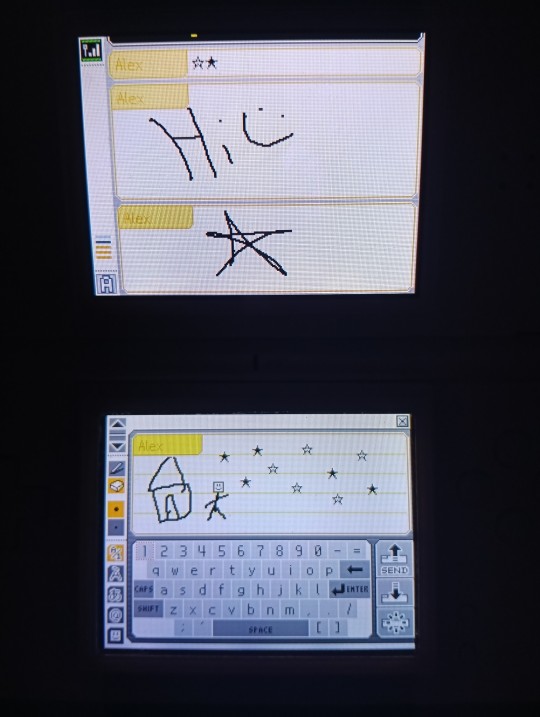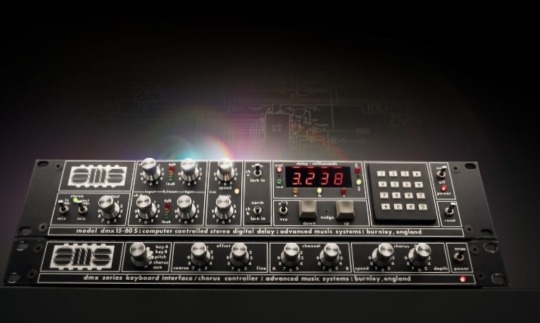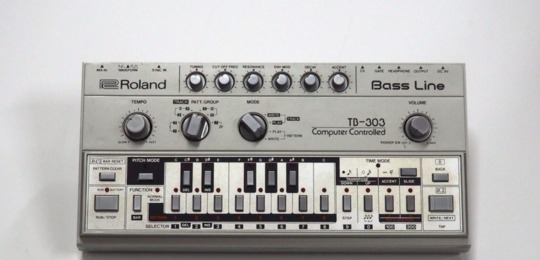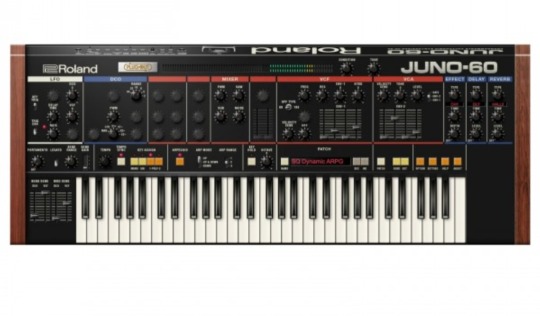Text
so do we all remember the little us being carefree with our friends playing DS and doing PictoChat?


8 notes
·
View notes
Text

The AMS DMX 15-80S Digital Delay & Pitch Shifter is a revolutionary piece of audio equipment that played a pivotal role in shaping the sound of many iconic artists and albums, particularly in the late '70s and '80s. Combining high-quality digital delay and pitch-shifting capabilities, it allowed musicians to manipulate audio with remarkable precision, creating effects like echo, doubling, and pitch modulation. This device became especially known for its musicality, offering sound manipulation that remained clean and clear, even with complex processing.
Key Features & Utility:
Digital Delay: Allows for creating echo and rhythmic delay effects.
Pitch Shifting: Enables altering the pitch of audio in real time.
Flexibility: Perfect for adding depth, space, and atmosphere in both studio recordings and live performances.
Notable Users:
1. Brian Eno: Used the AMS DMX in his ambient works, such as "Discreet Music" (1975). The unit's effects were essential in creating the atmospheric sounds that became Eno's signature style.
2. David Bowie: The device was crucial on albums like "Low" (1977) and "Heroes" (1977), where it helped craft the album's distinctive sound. The pitch-shifting and delay features added layers of complexity and texture to his music, particularly in his collaborations with Brian Eno.
3. Phil Collins: Collins utilized the AMS DMX on his solo tracks like "In the Air Tonight" (1981), famously using the delay effect to create the iconic "slapback" sound that became a hallmark of his work.
4. Peter Gabriel: The AMS DMX 15-80S was a key part of Gabriel’s sound in albums like "So" (1986), particularly in tracks like “Sledgehammer,” where its pitch-shifting and delay features added atmospheric and experimental textures.
5. Daft Punk: The French electronic duo used the AMS DMX on their groundbreaking albums "Homework" (1997) and "Discovery" (2001). The unit's delay and pitch-shifting capabilities helped Daft Punk craft their signature futuristic, robotic sound, seen in tracks like "Around the World".
2 notes
·
View notes
Text

The Akai MPC60 (often referred to as the MPC 600, though its correct name is MPC60) is a legendary sampling drum machine and MIDI sequencer released in 1988. It was designed in collaboration with Roger Linn, creator of the LinnDrum, and marked the beginning of the iconic MPC (Music Production Center) series. It combines 12-bit sampling, velocity-sensitive pads, and a powerful sequencer, giving producers an intuitive and hands-on way to build beats and arrange tracks.
Usage:
Primarily used for sampling, drum programming, and sequencing.
Known for its gritty 12-bit sound, swing timing (groove), and tight MIDI control.
Favored in hip-hop, R&B, and electronic music production.
Notable artists, songs, and albums:
J Dilla – often used the MPC60 and MPC3000 for his signature loose, human-feel beats, including on Donuts (2006).
DJ Premier (Gang Starr) – used it heavily on albums like Moment of Truth (1998) for chopped samples and hard-hitting drums.
Dr. Dre – early work (e.g., The Chronic, 1992) used the MPC60 as part of his production workflow.
A Tribe Called Quest – Q-Tip used the MPC60 on albums like The Low End Theory (1991), combining jazz samples with tight grooves.
Daft Punk – while more associated with synths, they used samplers like the MPC series for sequencing and live performance elements, especially during the Homework era (1997).
The MPC60 is considered a cornerstone of sample-based music, prized for its timing feel, classic sound, and tactile workflow.
6 notes
·
View notes
Text

The ARP 2600 is a semi-modular analog synthesizer released in the early 1970s by ARP Instruments. It offers a powerful combination of pre-wired signal paths and modular flexibility, meaning it can be played right out of the box or deeply customized using patch cables. It features three oscillators, a classic low-pass filter, envelope generators, a spring reverb, and a built-in preamp/speaker system.
Usage:
Known for its versatile sound design, from rich basses and leads to complex effects and textures.
Ideal for educational use, studio synthesis, film scoring, and live performance.
Notable artists, songs, and albums:
Stevie Wonder – used the ARP 2600 extensively in albums like Music of My Mind (1972) and Talking Book (1972): for lead synths and layered textures.
Herbie Hancock – featured on Head Hunters (1973) and beyond: used for funky synth solos and experimental sounds.
Joe Zawinul (Weather Report) – used it for atmospheric sounds and expressive leads on albums like Sweetnighter (1973).
Edgar Winter – used the 2600 for the iconic synth riff in “Frankenstein” from They Only Come Out at Night (1972).
Ben Burtt (sound designer) – created the voice of R2-D2 in Star Wars using an ARP 2600 (1977).
Daft Punk – used the ARP 2600 during the production of Random Access Memories (2013), notably for effects and layered analog textures.
The ARP 2600 is revered for its fat tone, hands-on control, and iconic sound, making it one of the most legendary synthesizers in music and film history.
0 notes
Text

The EMS Synthi AKS is a portable analog synthesizer made in the early 1970s by Electronic Music Studios (UK). It's famous for its matrix patchboard instead of patch cables, allowing users to connect oscillators, filters, envelopes, and other modules in a unique, compact format. It has a distinctively experimental, unpredictable sound, ideal for sound design, ambient textures, and electronic effects.
Usage:
Commonly used for spacey effects, glitches, drones, and modular-style sound exploration.
Known for creating robotic, alien, and cinematic textures.
Notable artists, songs, and albums:
Pink Floyd – “On the Run” from The Dark Side of the Moon (1973): the Synthi AKS was used to build the entire sequenced synth line.
Brian Eno – featured throughout Another Green World (1975) and Ambient 1: Music for Airports (1978): used for ambient textures and sonic experimentation.
Jean-Michel Jarre – used in Oxygène (1976) and Équinoxe (1978): for spacey effects and sweeping synth patterns.
Aphex Twin – rumored use on Selected Ambient Works Volume II (1994): for eerie, modulated soundscapes (though not officially confirmed).
Daft Punk – used during the production of Random Access Memories (2013): particularly for layering effects and unusual timbres on tracks like Touch.
The Synthi AKS is a cult classic—unpredictable but powerful for those who embrace its quirks.
16 notes
·
View notes
Text
Roland Juno-106 in action in the live performance of Alive 1997
1 note
·
View note
Text

The Roland TB-303 is a legendary bassline synthesizer released in the early 1980s, originally designed to mimic the sound of an electric bass. Although it failed commercially at first, it later became iconic for its squelchy, resonant sound that defined the acid house genre.
Notable artists who used the TB-303 include:
Phuture – with the groundbreaking track "Acid Tracks" (1987), widely regarded as the first acid house song, featured in the Acid Trax compilation.
Aphex Twin – used it in various tracks such as "Ventolin" and throughout the Analogue Bubblebath series.
Daft Punk – drew inspiration from the 303 in songs like "Teachers" and "Rollin' & Scratchin'" from their Homework album (1997).
The Prodigy – while not always using the TB-303 directly, they incorporated similar acid-inspired sounds in tracks like "Smack My Bitch Up" from The Fat of the Land (1997).
2 notes
·
View notes
Text

Moog Minimoog Voyager is a modern reissue of the classic Minimoog Model D, designed by Bob Moog. It’s a monophonic analog synthesizer known for its warm, fat bass and expressive lead sounds. The Voyager adds MIDI, patch memory, and more modulation options to the vintage design.
Used in:
Daft Punk – "Voyager" (from Discovery, 2001)
While not confirmed, the lead synth lines are likely shaped by Minimoog-style synthesis. Daft Punk often used analog synths like Moog in Discovery.
Trent Reznor (Nine Inch Nails) – "The Hand That Feeds" (from With Teeth, 2005)
The aggressive synth bass and leads often involve Moog gear, especially the Voyager.
Air – "Venus" (from Talkie Walkie, 2004)
The Voyager was used for smooth analog textures and melodic bass.
Jordan Rudess (Dream Theater) – Live performances and studio work
He uses the Voyager extensively for solos and layered leads.
5 notes
·
View notes
Text
Ruined
You carved a hole
Where my heart used to lay.
You stole it from me
And never gave it back.
You didn't even apologize
for the damage you provoked me.
I'm ruined now.
How will I ever love somebody else?
2 notes
·
View notes
Text

The Korg MS-20 is a legendary analog synthesizer used by several notable composers and artists across different genres.
Vangelis: One of the most famous users of the MS-20 is Greek composer Vangelis, who utilized it extensively in soundtracks like "Blade Runner" (1982) and "Chariots of Fire" (1981). The MS-20 contributed to the deep, atmospheric soundscapes in "Blade Runner" and the iconic, uplifting melodies in "Chariots of Fire."
Depeche Mode: The British synth-pop band Depeche Mode also favored the MS-20 in their early works, especially on "Speak & Spell" (1981). The synth’s aggressive basses and sharp leads helped define the band’s early electronic sound.
The Chemical Brothers: The MS-20 was used by The Chemical Brothers to shape their big beat sound, notably in tracks like "Block Rockin' Beats". The synth’s powerful bass and distorted leads became a key part of their style.
Daft Punk: The French duo Daft Punk incorporated the MS-20 on their album "Human After All" (2005). Tracks like "Robot Rock" and "Technologic" feature the MS-20's raw, analog tones, contributing to the minimal, robotic sound that defines the album.
Aphex Twin: Aphex Twin (Richard D. James) used the MS-20 in tracks like "Windowlicker" and "Come to Daddy". His intricate sound design made extensive use of the MS-20's sharp, squelching bass lines and leads.
1 note
·
View note
Text

The Roland VP-330 is a famous analog vocoder introduced in 1979, known for its ability to create both robotic vocals and lush synthetic choir sounds. It was widely used by electronic musicians for its rich, expressive sound.
Artists and Albums:
1. Kraftwerk – The Man-Machine (1978)
While not confirmed, the VP-330 or similar vocoders likely influenced the vocal sounds in tracks like "The Robots" and "The Model".
2. Daft Punk – Human After All (2005)
The VP-330’s vocoder sounds are essential in tracks like "Robot Rock", "Technologic", and "Television Rules the Nation, contributing to the iconic robotic voice effects.
3. Vangelis – Blade Runner Soundtrack (1982)
Vangelis often used vocoders, and while it’s unclear if he used the VP-330 specifically, similar instruments contributed to the futuristic sound in tracks like "Blade Runner Blues".
4. Giorgio Moroder – From Here to Eternity (1977)
Vocoder use is a key element of Moroder’s electronic productions, although it's uncertain if the VP-330 was involved specifically.
5. Herbie Hancock – Future Shock (1983)
Hancock’s use of vocoders in tracks like "Rockit" helped shape the sound of electronic jazz-fusion in the early 80s.
Notable Songs:
Kraftwerk: "The Robots"
Daft Punk: "Robot Rock", "Technologic"
Vangelis: "Blade Runner Blues"
Herbie Hancock: "Rockit"
2 notes
·
View notes
Text

The Roland TR-909 is a legendary drum machine from 1983, essential to house, techno, and electronic music. Its punchy analog kick and crisp digital hi-hats made it iconic.
Artists & Songs You Didn’t Expect Used It:
Daft Punk – Homework (1997)
Used in “Revolution 909”, “Da Funk”, and live sets.
Aphex Twin – Selected Ambient Works 85–92
Tracks like “Pulsewidth” feature subtle 909 rhythms.
Madonna – Erotica (1992)
“Deeper and Deeper” has a house groove driven by the 909.
Kanye West – Yeezus (2013)
“Black Skinhead” uses a heavily processed 909 beat.
Björk – Post (1995)
Songs like “Army of Me” include aggressive 909-style drums.
Frankie Knuckles – Pioneer of house, used the 909 in early Chicago house tracks.
4 notes
·
View notes
Text

The Roland Juno-60 is a legendary synth from 1982, known for its warm, rich sound and super easy controls. It has 6-voice polyphony, 1 oscillator per voice, and a built-in stereo chorus effect that gives it that dreamy '80s vibe. There's no MIDI, but it has a DCB port (Roland's old-school alternative).
Even with its simple design, the Juno-60 became a favorite in the music world.
Who used it?
A-ha – The iconic intro of "Take On Me"? Juno-60.
Eurythmics – "Sweet Dreams" features that lush synth sound.
Depeche Mode, Tame Impala, The Weeknd, and even Daft Punk have used it.
It also shows up in retro-sounding modern tracks without people realizing it.
If you’ve ever listened to synth-pop, retro wave, or chill electronic music, chances are… you’ve heard the Juno-60 without even knowing it!
#music#roland#synthesizer#vocal synth#vocoder#vintage#vintage music#80's#80s music#1980s#1980s music
3 notes
·
View notes
Text
Jupiter, Celestial King
A titan draped in golden light,
wrapped in tempests, fierce and bright.
Storms like whispers, deep and old,
etched in swirls of amber gold.
A crimson eye that never sleeps,
where time in endless circles weeps.
Thunder sings, the tempests cry,
lightning shatters velvet sky.
Silver moons in silent flight,
ghostly dancers, pale and white.
Europa dreams in frozen streams,
while Ganymede in starlight gleams.
O wandering king of endless spheres,
crowned in storms through ageless years,
your voice is wind, your breath divine,
a god where endless heavens shine.


Both photos taken by me with a Celestron 127EQ, then stacked and processed
3 notes
·
View notes
Text
they are all mythologies and oral traditions, we don't even know if the author of these works, Homer, exists. if that was the case he must have had a truly brilliant mind because he truly changed the Greek mythology of that time and which has been handed down to this day. The story of the Cyclops was also ingenious, where Odysseus with his deceptions and concoctions made the Cyclops believe that he (Odysseus) was called "Nobody", so as to make the other Cyclopes believe that no one was killing him with force and deceit
For some reason only recently i realized just how much creativity and intelligence the person that wrote the Iliad and Odyssey had like where did they get the horse idea from? Or the ‘nobody’ idea to answer to the cyclops.
If anyone knows / has theories about where did they get the ideas from please tell me
Also I used ‘they’ because there are some people that say Homer didn’t write these…
24 notes
·
View notes
Text
Music is the soul of love, the sigh of the heart, the most sublime of the arts. It is the most extreme expression of what cannot be expressed in words and about which it is impossible to remain silent. The one and only true language in the world, together with kisses, music and looks.
#music#classical music#edm music#electronic music#musical instruments#orchestra#elegance#poetry#poem
6 notes
·
View notes